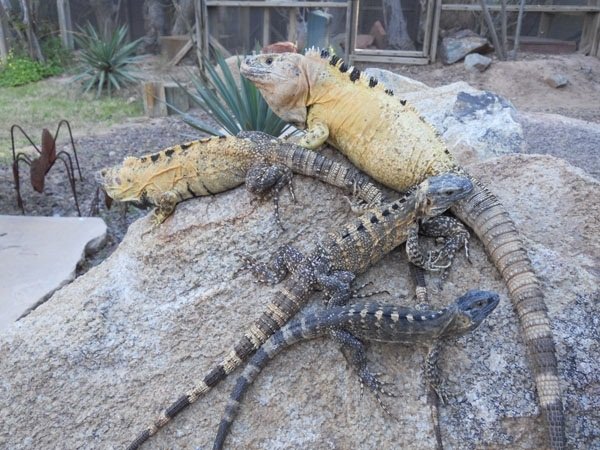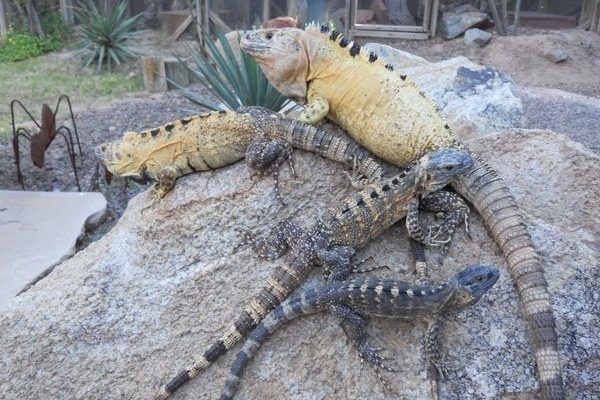
Imagine going to a pet store and spotting one of these beauties. They might be small enough to fit in your hand at first, but don’t let that fool you. These iguanas can grow quite large, and they need space to thrive. So, let’s dive into how big spiny-tailed iguanas get and what kind of habitat they require to live their best lives.
Size of Spiny-Tailed Iguanas
Spiny-tailed iguanas come in different species, and their sizes can vary quite a bit. On average, an adult spiny-tailed iguana can reach lengths of about 2 to 4 feet from nose to tail. Picture a large cat or a small dog—these lizards are no small commitment! The size can depend on their specific variety, with some being on the smaller end of the spectrum while others can grow larger.
For instance, the *Ctenosaura pectinata*, or the black spiny-tailed iguana, can grow up to 4 feet long, while the *Ctenosaura acanthura* may only reach about 2 feet. Honestly, if you’re planning on getting one, think about the space not just for the iguana’s body but also for its environment. They thrive best in spacious enclosures where they can roam and bask.
Growth Stages
Like all reptiles, spiny-tailed iguanas go through several growth stages. When they’re hatchlings, they’re quite tiny, usually measuring only a few inches long. This is when they’re most vulnerable, so care must be taken in their initial setup.
As they mature, they grow rapidly, especially during their juvenile stage, reaching their adult size within just a couple of years. It’s important to keep an eye on their growth and adjust their diet and habitat accordingly. A well-fed iguana is a happy iguana!
Enclosure Requirements for Spiny-Tailed Iguanas
Now that we’ve covered their size, let’s chat about where a spiny-tailed iguana will live. These lizards need a spacious enclosure to move around comfortably. An adult spiny-tailed iguana should ideally have an enclosure that’s at least 4 feet long and 2 feet wide. The height is equally important since they love to climb. Aim for an enclosure that’s at least 4 feet tall, which allows them ample space to explore.
In the wild, they often bask on rocks or branches, so providing climbing structures in their habitat is crucial. You might want to include sturdy branches, logs, or even commercially available climbing platforms to mimic their natural environment.
Temperature and Humidity Needs
Aside from just space, temperature and humidity play major roles in an iguana’s well-being. They need a basking area around 95°F (35°C) and cooler areas around 80°F (27°C). Using a good quality heat lamp can help create these temperature gradients inside their cage.
Humidity is another important factor. Spiny-tailed iguanas come from environments that are humid, so keeping humidity levels around 40-60% is essential. This can be achieved through regular misting and placing a water dish in their enclosure. Just think of it as creating a little tropical paradise for your iguana!
Diet and Nutrition for Growth
Proper nutrition goes hand-in-hand with size, so let’s talk about what these iguanas eat. They are primarily herbivores, enjoying a variety of leafy greens, fruits, and vegetables. Some popular choices include collard greens, dandelion greens, and squash.
You might be wondering how this affects their growth. A nutritious diet aids in healthy development and can prevent issues like metabolic bone disease, which can arise from a lack of calcium. Make sure to dust their food with supplements as needed, and they’ll grow up strong and healthy.
Common Challenges and Solutions
Even seasoned iguana owners can face challenges. One common issue is stress, which can lead to a decrease in appetite and unhealthy weight loss. Stress factors might include inadequate space, improper temperatures, or even too much handling.
If your iguana seems lethargic or is losing weight, assess their environment. Ensure they have enough space to roam, the right temperature gradients, and minimal disturbances. Sometimes, creating a more tranquil habitat can coax them back to their normal, lively selves.
Handling and Socialization
Spiny-tailed iguanas can be a bit shy and skittish, especially when they’re still getting used to their surroundings. Handling them gently and often can help them become more comfortable with you. Start by giving them space to explore their new home, then gradually introduce yourself into their world.
Try to remember, though, that they’re not like dogs or cats. They won’t necessarily seek out your affection, but with patience, they can become more tolerant of handling. Just a few minutes a day can help them get used to you, but always watch for signs of stress and give them the option to retreat to their secure spaces.
Bringing a spiny-tailed iguana into your life is an exciting venture, but it comes with responsibilities. They may be small when you first get them, but they can grow into sizable companions needing a suitable environment to thrive. Understanding how big they get and what they require for an ideal living space is essential for any potential owner.
By providing the right enclosure, proper diet, and socialization, you’ll be setting yourself up for a rewarding experience with your new reptilian friend. So, if you’re ready for a long-term commitment, a spiny-tailed iguana might just be the perfect match for you!

